Related Research Articles

The Kiss in the Tunnel, also known as A Kiss in the Tunnel, is a 1899 British short silent, comedy film, produced and directed by George Albert Smith, showing a couple sharing a brief kiss as their train passes through a tunnel, which is said to mark the beginnings of narrative editing. The film is the first to feature Laura Bayley, Smith's wife.
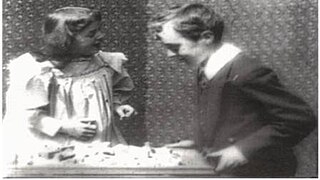
The House That Jack Built is a 1900 British short, silent trick film directed by George Albert Smith, featuring a boy who knocks over a house made of bricks built by his sister and then rebuilds it when the original sequence is shown in reverse. "In addition to exploiting a popular cinematic trick," of, "reversing the film in the projector," and, "its audience's presumed knowledge of the technique," the director, according to Michael Brooke of BFI Screenonline, "was continuing his experiments with narrative forms," with the reversed sequence, "interpreted as wish-fulfilment on the part of the girl, hoping that time will literally turn back on itself to allow her house to be rebuilt," he, "demonstrates that while this is impossible in reality, it is easily achievable in cinema."

Santa Claus is an 1898 British silent trick film directed by George Albert Smith, which features Santa Claus visiting a house on Christmas Eve. The film, according to Michael Brooke of BFI Screenonline, "is believed to be the cinema's earliest known example of parallel action and, when coupled with double-exposure techniques that Smith had already demonstrated in the same year's The Mesmerist (1898) and Photographing a Ghost (1898), the result is one of the most visually and conceptually sophisticated British films made up to then." It has been described as the very first Christmas movie and a technical marvel of its time.

The Old Maid's Valentine is a 1900 British short silent comedy film, directed by George Albert Smith, which features the titular Miss Pimple receiving an unpleasant surprise on 14 February. The film, according to Michael Brooke of BFI Screenonline, "is essentially a facial - a medium close-up shot of a single performer whose changing expression constitutes virtually all the film's dramatic action." David Fisher points out that, "the flapping of the sheet of paper and the movement of the calendar betray the open-air set," which, "makes it difficult to read the message: Just like Mama," whilst, "the remarkably well-behaved cat," which, "sits patently licking its paws," "suggests that Smith may have already learned the trick of smearing the cat's fur with food."
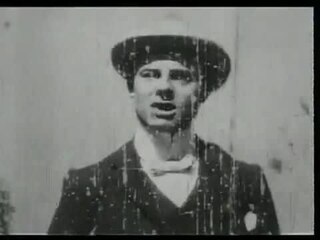
The Big Swallow is a 1901 British silent comic trick film, directed by James Williamson, featuring a man, irritated by the presence of a photographer, who solves his dilemma by swallowing him and his camera whole. The three-shot trick film is, according to Michael Brooke of BFI Screenonline, "one of the most important early British films in that it was one of the first to deliberately exploit the contrast between the eye of the camera and of the audience watching the final film".

Upside Down; or, the Human Flies is an 1899 British silent trick film, directed by Walter R. Booth, featuring a conjuror sending his audience to the ceiling. The film, "exploits a very simple illusion: that of filming with the camera turned upside-down so that the actors appear to be performing on the ceiling," and according to Michael Brooke of BFI Screenonline, "the effectiveness of the final result is such that nearly seventy years later Stanley Kubrick used the same technique in 2001: A Space Odyssey (1968)." The conjuror was reputedly played by Booth himself.

Undressing Extraordinary is a 1901 British silent comic trick film directed by Walter R. Booth, featuring a tired traveller struggling to undress for bed. The short, which lasts 3 minutes 10 seconds, "provides one of the earliest filmed examples of something that would become a staple of both visual comedy and Surrealist art: that of inanimate objects refusing to obey natural physical laws, usually to the detriment of the person encountering them," and, according to Michael Brooke of BFI Screenonline, "has also been cited as a pioneering horror film," as, "the inability to complete an apparently simple task for reasons beyond one's control is one of the basic ingredients of a nightmare."

The Waif and the Wizard, also entitled The Home Made Happy, is a 1901 British silent comic trick film, directed by Walter R. Booth, featuring a magician using his magic to aid an ailing girl at the request of her brother. The film, "is rather less elaborate in terms of special effects than the other films that W.R. Booth and R.W. Paul made the same year," but, according to Michael Brooke of BFI Screenonline, "provides an excellent illustration of how effects used sparingly can often have more impact, especially when set in a suitable emotional context."
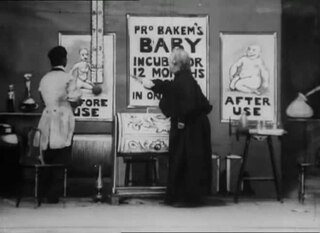
An Over-Incubated Baby is a 1901 British silent comic trick film, directed by Walter R. Booth, featuring a woman who gets an unpleasant surprise after placing her baby in Professor Bakem's baby incubator for 12 months growth in one hour. The film is, "one of the most original of the trick films made by W.R. Booth and R.W. Paul in 1901." According to Michael Brooke of BFI Screenonline, "one of the less elaborate films made by Booth and Paul that year, though the concept itself is so imaginative that it arguably didn't need any more than basic jump-cut transformations."

Cheese Mites, or Lilliputians in a London Restaurant is a 1901 British short silent trick film, directed by Walter R. Booth. A gentleman is entertained by the little people who emerge from the cheese at his table.

Artistic Creation is a 1901 British silent comic trick film directed by Walter R. Booth, featuring a lightning sketch artist drawing a picture of a woman which comes to life piece by piece. The film "is one of the earliest examples of a film about an artist's creations coming to life," and according to Michael Brooke of BFI Screenonline, "a metaphorical cautionary tale about the responsibilities that should be borne by both creative artists and indeed the male sex in general."

The Haunted Curiosity Shop is a 1901 British silent horror trick film directed by Walter R. Booth, featuring an elderly curio dealer alarmed by various apparitions that appear in his shop.

The Extraordinary Waiter is a 1902 British silent comic trick film, directed by Walter R. Booth, featuring a brutish colonialist failing to destroy a blackfaced waiter. The film "makes for somewhat uncomfortable viewing," but according to Michael Brooke of BFI Screenonline, "it's just about possible to read this as a metaphor for the rather more widespread frustrations arising from British colonial rule, though it seems unlikely that this was intentional on Booth's part."
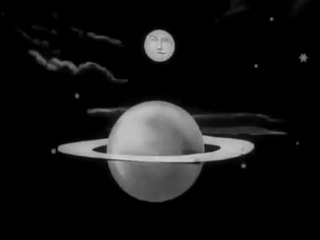
The '?' Motorist is a 1906 British silent comedy trick film, commonly called "The Mad Motorist" or "Questionmark Motorist" and directed by Walter R. Booth. Released in October 1906, the film is "one of the last films that W.R. Booth made for the producer-inventor R.W. Paul," and, according to Michael Brooke of BFI Screenonline, "looks forward to the more elaborate fantasies that Booth would make for Charles Urban between 1907 and 1911, as well as drawing on a wide range of the visual tricks that Booth had developed over the preceding half-decade."

Is Spiritualism a Fraud? is a 1906 British silent trick film directed by Walter R. Booth, featuring a medium exposed as a fake during a séance.

The Magician is a 1898 French silent trick film directed by Georges Méliès, featuring a wizard, a Pierrot and a sculptor in a rapid series of substitution splices. The film is, "another exercise in the art of the jump-cut," according to Michael Brooke of BFI Screenonline, "in the tradition of Georges Méliès' earlier A Nightmare and The Haunted Castle ."
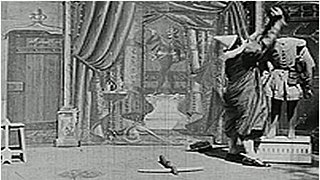
Adventures of William Tell is an 1898 French silent trick film directed by Georges Méliès, featuring a clown trying to shoot fruit off the head of a dummy which comes to life. The film is "a knockabout farce based on jump-cuts and the timely substitution of dummies for real bodies," with, according to Michael Brooke of BFI Screenonline, "a level of onscreen violence not previously seen in a surviving Méliès film," which marks, "a bridge between the onstage effects of the famous Théâtre du Grand Guignol and countless later outpourings of comically extreme screen violence as seen in everything from Tex Avery cartoons to the early films of Sam Raimi."

The Automatic Motorist is a 1911 British silent comic trick film, directed by Walter R. Booth, featuring a robot chauffeur taking an inventor and a young honeymooning couple on a wild ride around the planets and under the sea. The trick film is a "virtual remake of The '?' Motorist (1906)," according to Michael Brooke of BFI Screenonline, "but on a bigger scale."
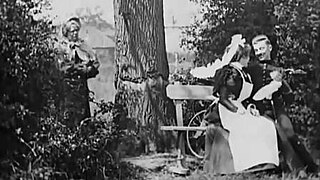
Tommy Atkins in the Park is an 1898 British short black-and-white silent comedy film, directed by Robert W. Paul, featuring a couple courting in a park who are forced to use desperate measures to get rid of a stout matron who interrupts them. The film was a remake of Alfred Moul's The Soldier's Courtship (1896). It is included on the BFI DVD R.W. Paul: The Collected Films 1895-1908 and a clip is featured in Paul Merton's interactive guide to early British silent comedy How They Laughed on the BFI website.

Willie's Magic Wand is a 1907 British silent comic trick film, directed by Walter R. Booth, featuring a young boy terrorising the household with his father's magic wand.
References
- ↑ "X-Rays". silentera.com. Progressive Silent Film List.
- 1 2 Brooke, Michael. "The X-Rays". BFI Screenonline Database. Retrieved 24 April 2011.